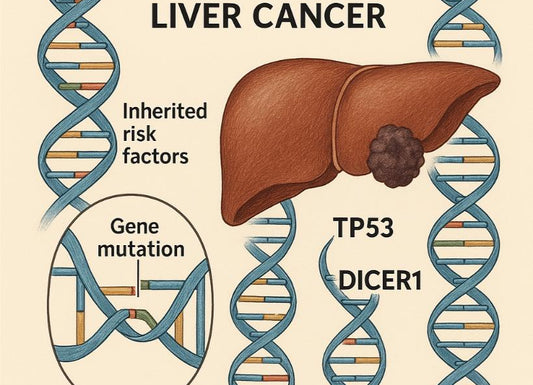Early Detection of Liver Disease
 Written By
Yusela Aquino
Written By
Yusela Aquino

Catching liver disease early can make a significant difference in treatment outcomes. The liver plays a vital role in your overall health by filtering toxins, supporting digestion, and producing proteins necessary for bodily functions. Though it has a remarkable ability to regenerate, the liver can still be damaged by factors such as excessive alcohol consumption, viral infections, and poor diet. Recognizing the early warning signs of liver dysfunction, such as fatigue, jaundice, or abdominal pain, and adopting preventive measures like regular checkups, a balanced diet, and avoiding harmful substances, can significantly reduce the risk of developing severe liver conditions.
Recognizing Liver Disease: Causes and Risk Factors

Liver disease refers to a broad category of disorders that interfere with normal liver function. Several factors contribute to liver-related problems, including:
- Excessive alcohol consumption: Long-term alcohol abuse can lead to conditions such as alcoholic hepatitis and cirrhosis.
- Viral infections: Hepatitis B and C are leading causes of chronic liver disease worldwide.
- Non-alcoholic fatty liver disease (NAFLD): Linked to obesity and metabolic disorders, NAFLD is becoming increasingly common.
- Medication-induced: Some prescription and over-the-counter drugs can cause liver damage when taken in high doses or over long periods.
- Poor lifestyle choices: A diet high in processed foods and a sedentary lifestyle can contribute to liver dysfunction.
Key Tests for Early Liver Disease Detection
Detecting liver disease early is key in preventing irreversible damage. Healthcare professionals use various tests to evaluate liver function and detect abnormalities:
Blood Tests for Liver Health
- Liver function tests – Measure enzyme levels, including alanine aminotransferase (ALT) and aspartate aminotransferase (AST), which indicate liver inflammation or damage.
- Bilirubin levels – High bilirubin levels can signal liver dysfunction or bile flow obstruction.
- Albumin and total protein – Low levels may suggest impaired liver function and protein synthesis.
Imaging Techniques
- Ultrasound – A non-invasive test that helps detect fatty deposits, tumors, or scarring.
- MRI and CT scans – Advanced imaging methods that provide detailed views of the liver to assess structural changes.
Fibrosis and Cirrhosis Detection
- Transient elastography (FibroScan) – Measures liver stiffness, an indicator of fibrosis or scarring.
- Magnetic resonance elastography (MRE) – Uses MRI technology combined with sound waves to assess liver health more comprehensively.
Urine Testing for Liver Health

Urine tests can be an effective and non-invasive way to monitor liver function. Ribbon Checkup offers an advanced at-home urine testing kit that helps detect early liver dysfunction. Their easy-to-use test screens for bilirubin and urobilinogen, allowing individuals to take proactive steps toward liver health. By incorporating urine tests into routine check-ups, you can gain valuable insights without the need for invasive procedures.
Routine testing, especially for individuals at higher risk, can help detect liver problems before they become severe.
Subtle Signs of Liver Disease
In the early stages, liver disease may not cause noticeable symptoms, making routine check-ups essential. However, there are some warning signs to be aware of:
- Persistent fatigue or weakness
- Unexplained weight loss or appetite changes
- Jaundice (yellowing of the skin and eyes)
- Abdominal discomfort or swelling
Early recognition of these symptoms can prompt timely medical intervention, potentially preventing further damage.
Practical Steps to Maintain a Healthy Liver

Many liver-related conditions are preventable. Incorporating these habits into your daily routine can promote long-term liver health:
- Eat a nutrient-rich diet. Focus on whole foods, including fresh fruits, vegetables, lean proteins, and healthy fats.
- Stay physically active. Regular exercise helps regulate weight and reduces fat accumulation in the liver.
- Limit alcohol intake. If you drink alcohol, do so in moderation to prevent liver strain.
- Be mindful of medications. Always follow dosing guidelines and consult a doctor before taking new medications or supplements.
- Stay hydrated. Drinking enough water supports liver function by helping flush out waste products.
High-Risk Groups: Who Should Be Extra Cautious?
Certain individuals should monitor their liver health more closely, including those with:
- A family history of liver disease
- Hepatitis infections or exposure to high-risk environments
- Obesity, diabetes, or metabolic disorders
- Long-term use of medications that may affect the liver
Take Charge of Your Liver Health
Your liver is a resilient organ, but taking proactive steps can make a significant difference in its longevity. If you have risk factors or experience potential symptoms, don’t hesitate to consult a healthcare professional. Small, mindful lifestyle changes—such as improving your diet, exercising regularly, and avoiding excessive alcohol—can go a long way in protecting your liver and overall well-being.
By staying informed and making conscious health choices, you can support optimal liver function and reduce the risk of serious liver-related complications.
References
5 reasons you may be at risk for liver disease. (2024, September 6). Johns Hopkins Medicine. https://www.hopkinsmedicine.org/health/wellness-and-prevention/5-reasons-you-may-be-at-risk-for-liver-disease
Albumin blood test. (n.d.). https://medlineplus.gov/lab-tests/albumin-blood-test/
AST (Aspartate aminotransferase) | Pathology Tests Explained. (n.d.). https://pathologytestsexplained.org.au/ptests.php?q=AST+%28Aspartate+aminotransferase%29
Chayanupatkul, M., & Liangpunsakul, S. (2014). Alcoholic hepatitis: A comprehensive review of pathogenesis and treatment. World Journal of Gastroenterology, 20(20), 6279–6286. https://doi.org/10.3748/wjg.v20.i20.6279
Chronic Liver Disease/Cirrhosis. (2024, July 31). Johns Hopkins Medicine. https://www.hopkinsmedicine.org/health/conditions-and-diseases/chronic-liver-disease-cirrhosis
Disease, L., Therapy, D., Treatment, T., & Outcome, O. (2020). The role of diet therapy in the treatment of liver disease. Materia Socio Medica, 32(3), 200. https://doi.org/10.5455/msm.2020.32.200-206
Francis P, Navarro VJ. Drug-Induced Hepatotoxicity. [Updated 2024 Sep 10]. In: StatPearls [Internet]. Treasure Island (FL): StatPearls Publishing; 2025 Jan-. Available from: https://www.ncbi.nlm.nih.gov/books/NBK557535/
Grinshpan, L. S., Eilat-Adar, S., Ivancovsky-Wajcman, D., Kariv, R., Gillon-Keren, M., & Zelber-Sagi, S. (2023). Ultra-processed food consumption and non-alcoholic fatty liver disease, metabolic syndrome and insulin resistance: A systematic review. JHEP Reports, 6(1), 100964. https://doi.org/10.1016/j.jhepr.2023.100964
Hepatitis B and C. (2022, September 24). Yale Medicine. https://www.yalemedicine.org/conditions/hepatitis-b-and-c
Lala V, Zubair M, Minter DA. Liver Function Tests. [Updated 2023 Jul 30]. In: StatPearls [Internet]. Treasure Island (FL): StatPearls Publishing; 2025 Jan-. Available from: https://www.ncbi.nlm.nih.gov/books/NBK482489/
Liver Disease - NIDDK. (n.d.). National Institute of Diabetes and Digestive and Kidney Diseases. https://www.niddk.nih.gov/health-information/liver-disease
Pepin, K. M., Welle, C. L., Guglielmo, F. F., Dillman, J. R., & Venkatesh, S. K. (2021). Magnetic resonance elastography of the liver: everything you need to know to get started. Abdominal Radiology, 47(1), 94–114. https://doi.org/10.1007/s00261-021-03324-0
Shah NJ, Royer A, John S. Alcoholic-Associated Hepatitis. [Updated 2023 Jun 5]. In: StatPearls [Internet]. Treasure Island (FL): StatPearls Publishing; 2025 Jan-. Available from: https://www.ncbi.nlm.nih.gov/books/NBK470217/
Symptoms of liver disease - British Liver Trust. (2022, December 19). British Liver Trust. https://britishlivertrust.org.uk/information-and-support/liver-health-2/symptoms-of-liver-disease/
The Royal Australian College of general Practitioners. (n.d.). FibroScan and transient elastography. Australian Family Physician. https://www.racgp.org.au/afp/2013/july/fibroscan
Urobilinogen in urine. (n.d.). https://medlineplus.gov/lab-tests/urobilinogen-in-urine/
VA.gov | Veterans Affairs. (n.d.). https://www.hepatitis.va.gov/hcv/patient/diagnosis/labtests-bilirubin.asp
Vovchuk, E., MD. (n.d.). Alanine aminotransferase: reference range, interpretations, collection and panels. https://emedicine.medscape.com/article/2087247-overview

Yusela is a medical student with a degree in Biology and a strong foundation in health communication. With experience in both research and clinical settings, she writes clear, evidence-informed content to help patients and caregivers better understand liver health, chronic disease, and transplant care.



